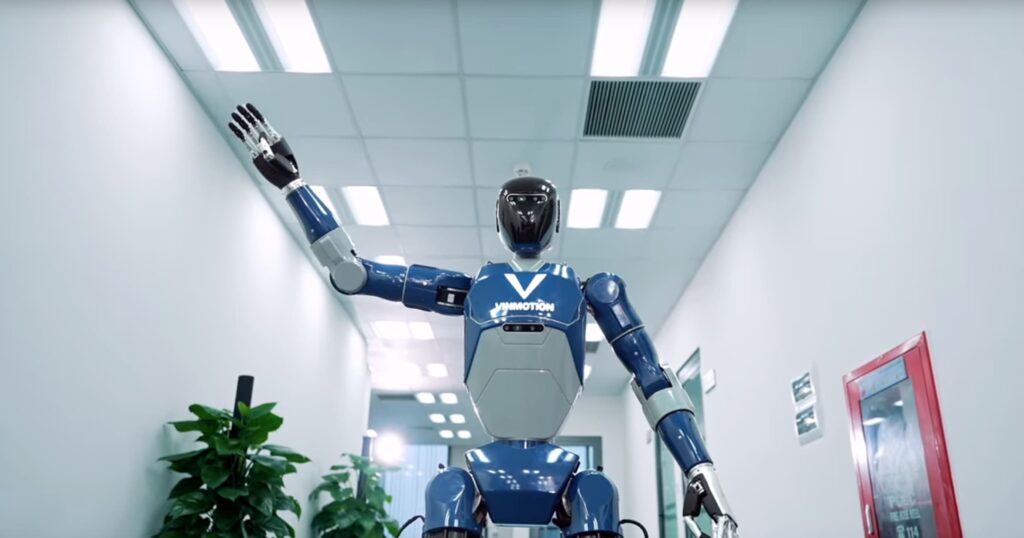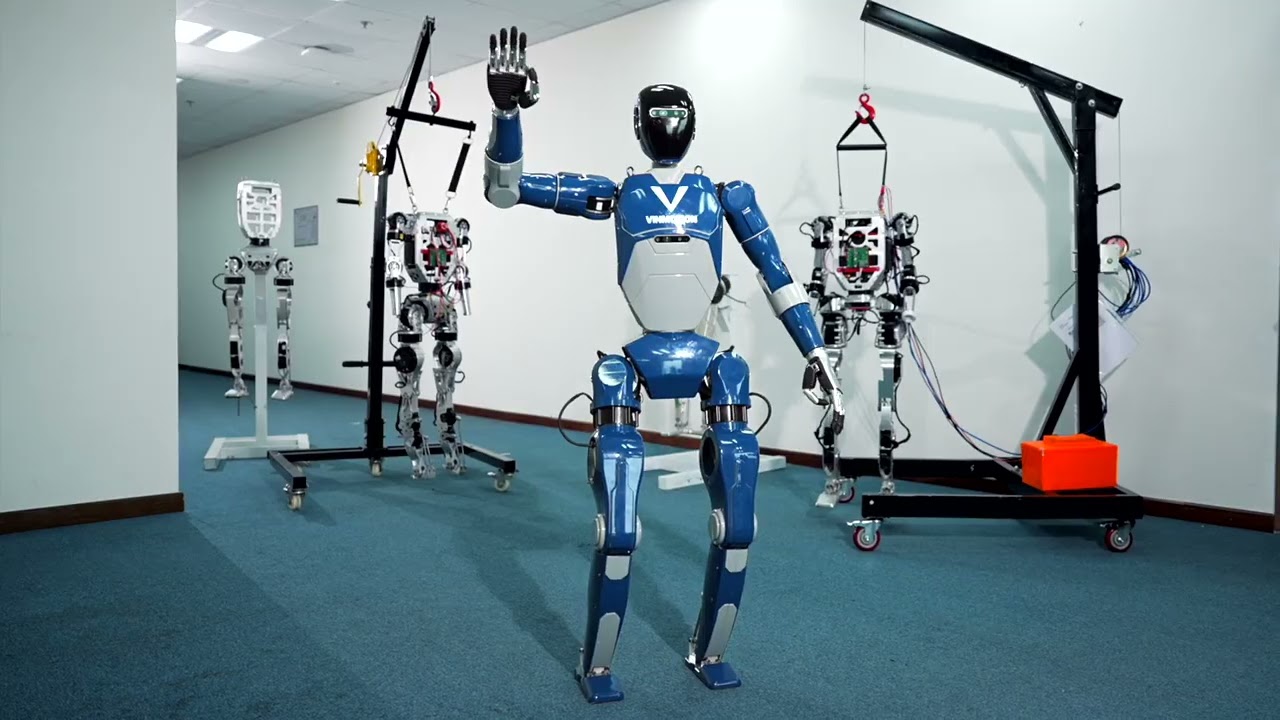Vietnam’s emergence on the global robotics map took a significant step during the celebration of Vingroup’s 32nd anniversary. Before over 1,000 attendees, the young startup VinMotion showcased Motion 1, its first humanoid robot prototype capable of executing synchronized choreography in real-time.
A technological debut with its own signature
Founded just seven months ago within Vingroup’s innovation ecosystem, VinMotion surprised with a demonstration combining motion control, real-time computing, and distributed coordination.
Unlike many robots that rely on pre-programmed routines, Motion 1 uses an internal network infrastructure that allows it to execute multiple commands simultaneously across devices, even in high-interference environments like large events.
Nguyen Trung Quan, VinMotion’s president, explained, “The robots don’t just depend on routines—they operate through a real-time communication system that ensures they act as a coordinated whole.”
Vietnamese engineering from start to finish
The design of Motion 1 is entirely local. From proprietary hardware to synchronization algorithms and distance sensors that maintain balance, the entire system was developed by VinMotion’s team of engineers.
The demonstration featured several humanoids moving in perfect coordination—an advancement that not only impressed the audience but also demonstrated Vietnam’s capacity to compete in a sector historically dominated by tech giants from the United States, Japan, South Korea, and China.
Beyond entertainment: an industrial plan
Although Motion 1’s debut included a striking choreography, VinMotion’s ambitions extend far beyond entertainment. The company is already working on a development plan focused on practical applications:
- Factories and warehouses: robots capable of operating in high-repetition industrial environments.
- Assistive services: supporting hospitals and senior residences.
- Operations in risky zones: emergency intervention, rescue, or manipulation of hazardous materials.
With this roadmap, VinMotion aims to align its technology with global trends in advanced automation, where humanoid robots are increasingly seen as allies in productivity and safety.
Vietnam, a new player in global robotics
The launch of Motion 1 comes at a time when the humanoid market is experiencing unprecedented acceleration. Companies like Tesla, Figure, and Xiaomi have already presented prototypes, but VinMotion’s entry adds a geopolitical nuance: Vietnam aspires to be more than a low-cost manufacturer; it seeks to lead strategic segments of global robotics.
The factors supporting this ambition are clear:
- Lower cost pressures compared to advanced economies.
- An expanding technical community made up of young engineers trained in AI and mechatronics.
- Less regulatory rigidity, allowing for faster field testing and adoption of technology.
A message from Hanoi
The debut of Motion 1 served both as a demonstration of technical capability and a declaration of intent. VinMotion aims to establish itself as the Southeast Asian reference in humanoid robotics, combining precision engineering with a futuristic vision.
The message is clear: robotic synchronization is no longer just a laboratory concept but a tangible reality born in Hanoi.
Frequently Asked Questions (FAQ)
What is Motion 1?
It’s the first humanoid robot prototype developed by the Vietnamese startup VinMotion, capable of executing synchronized group movements thanks to real-time coordination algorithms.
How does it differ from other humanoid robots?
While many depend on pre-programmed routines, Motion 1 uses a communication network that enables dynamic and adaptable synchronization, even amid interference.
What practical applications are anticipated for Motion 1?
VinMotion plans to expand its use to factories, warehouses, assistive services, and operations in hazardous environments.
Why can Vietnam be a leader in robotics?
Thanks to lower costs, a growing technical community, and a more flexible regulatory framework, the country offers conditions for rapid advancement in humanoid adoption and export.


